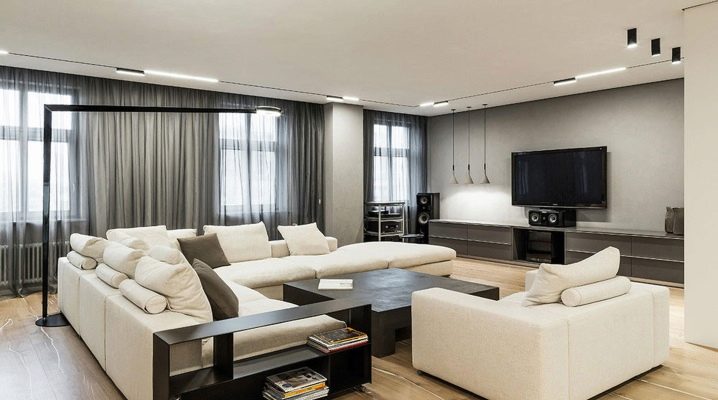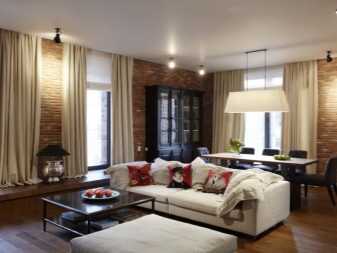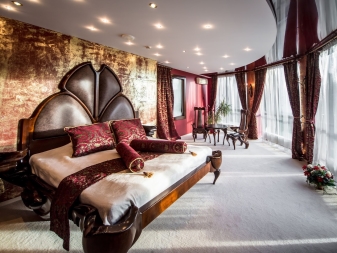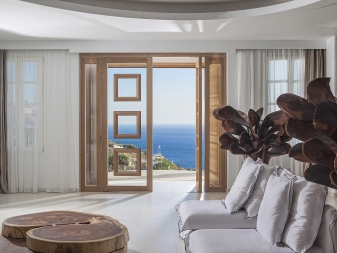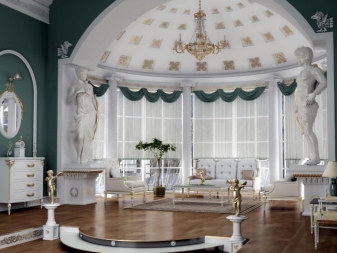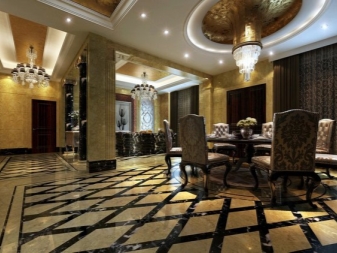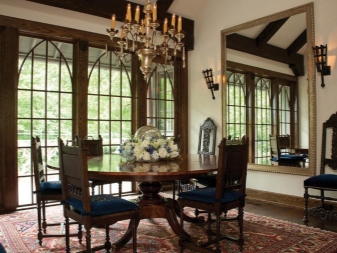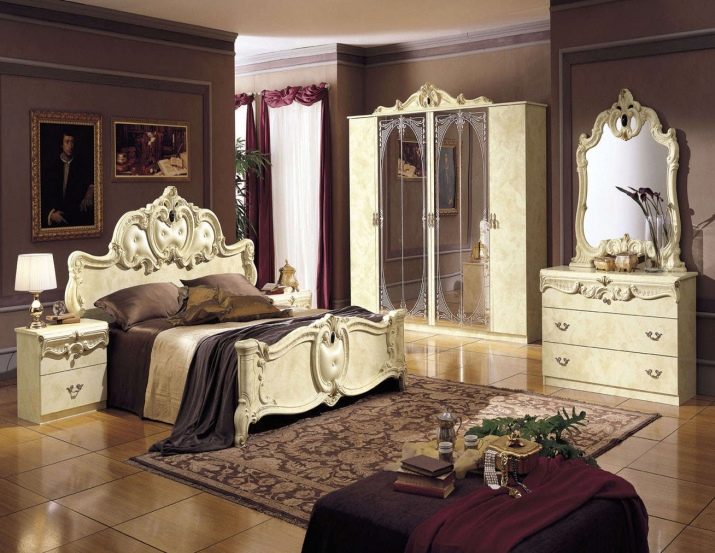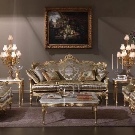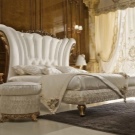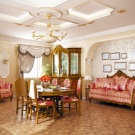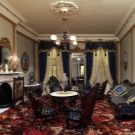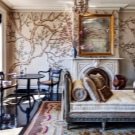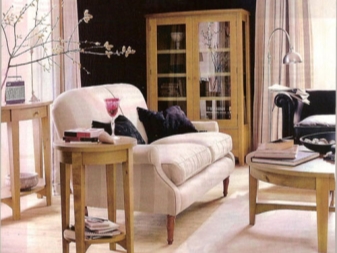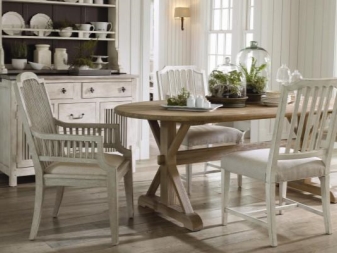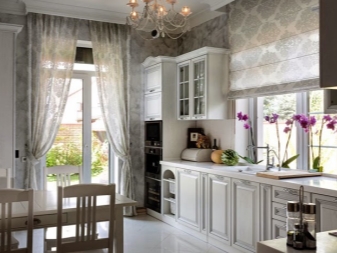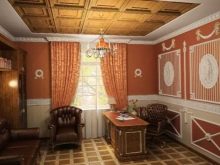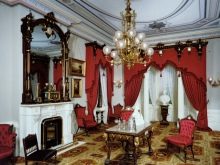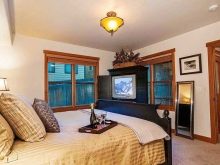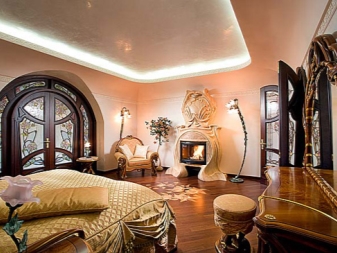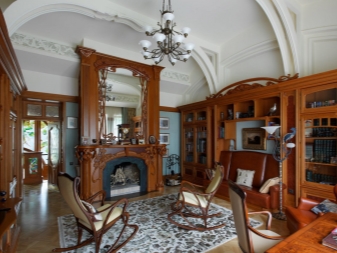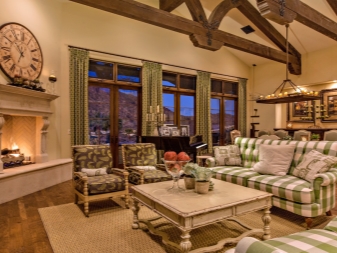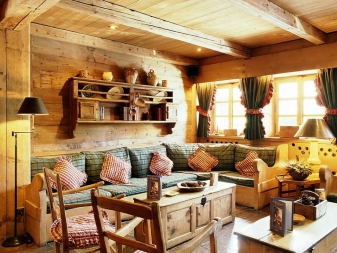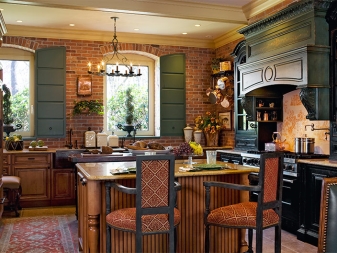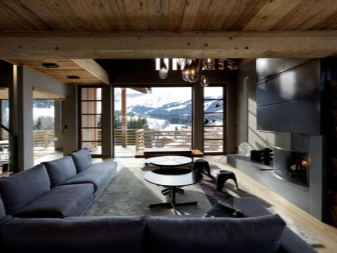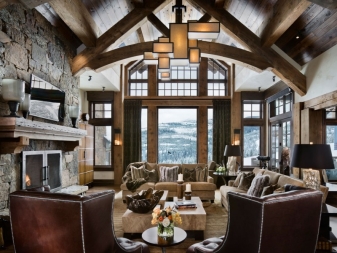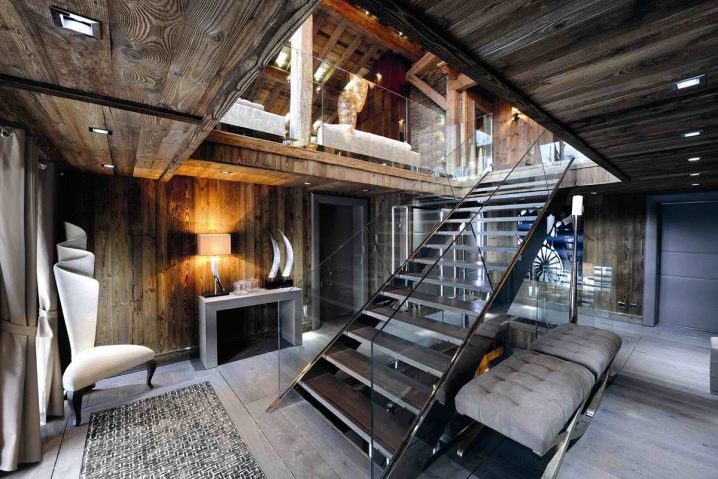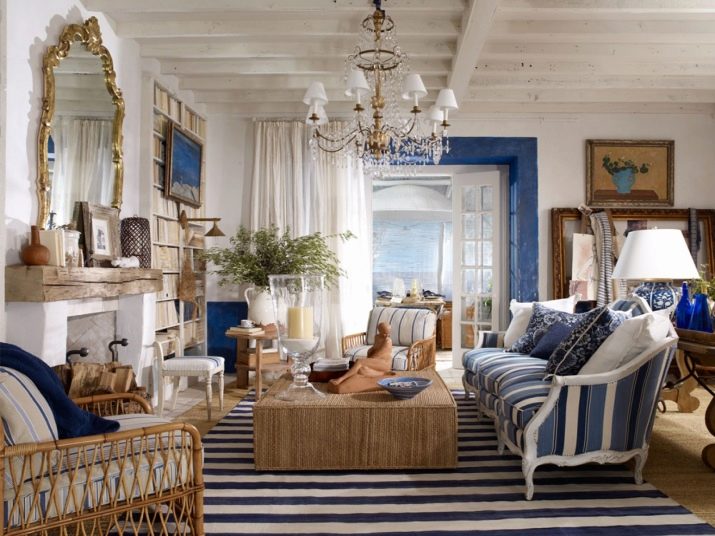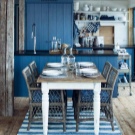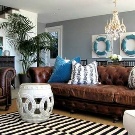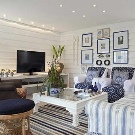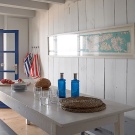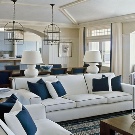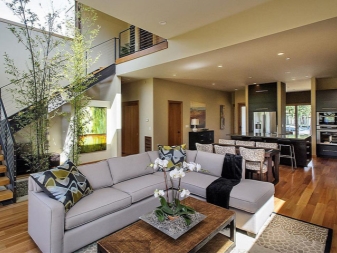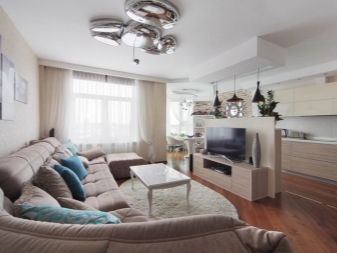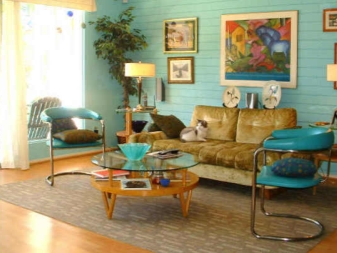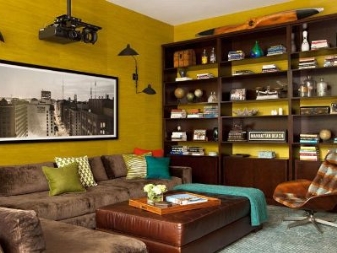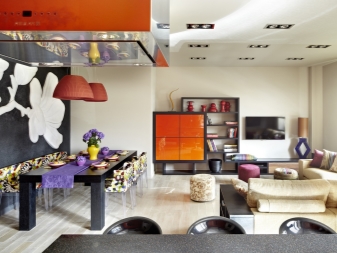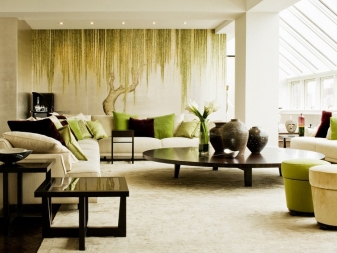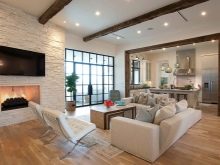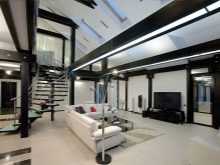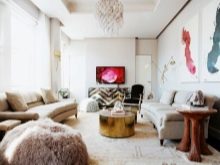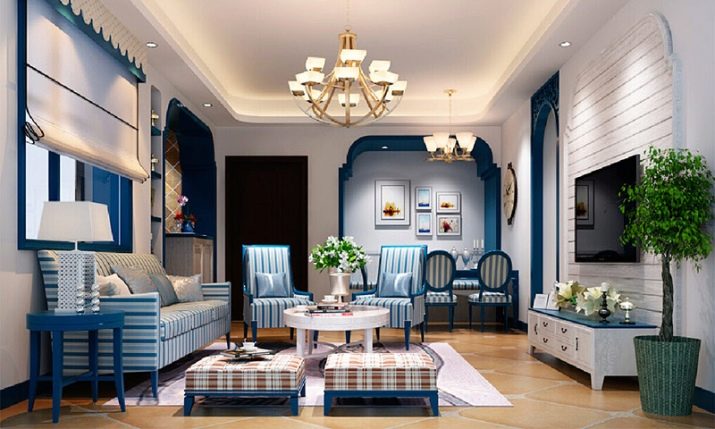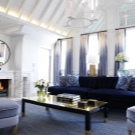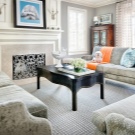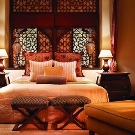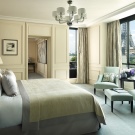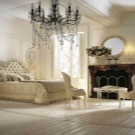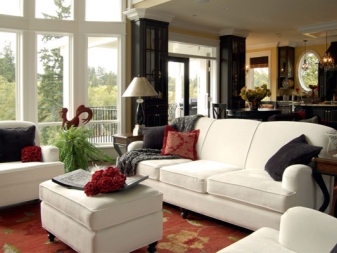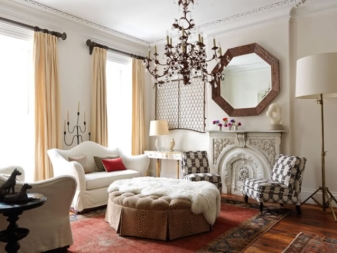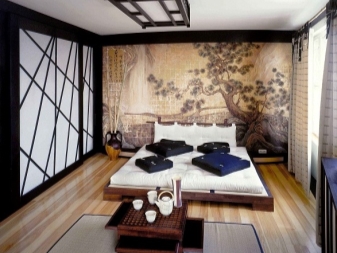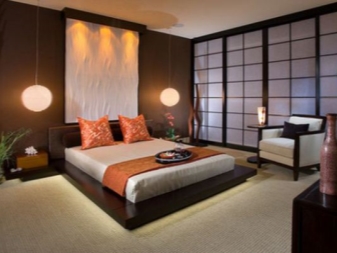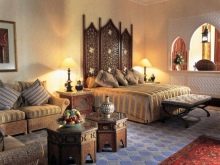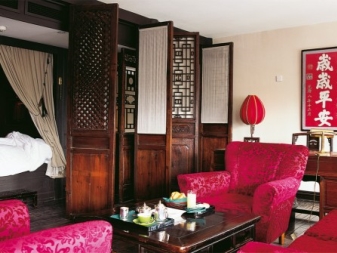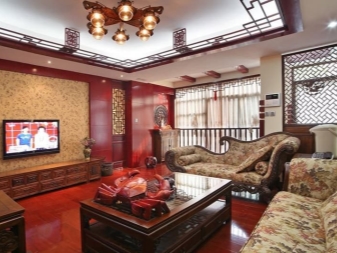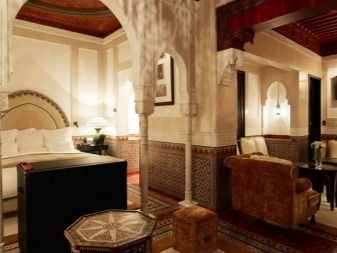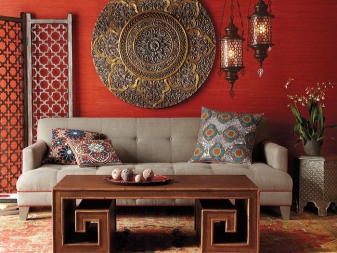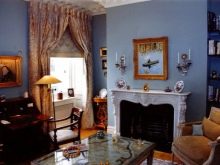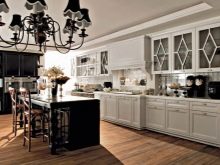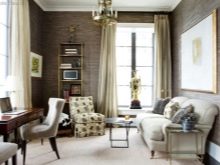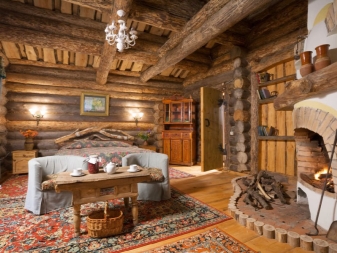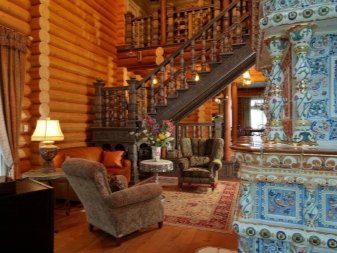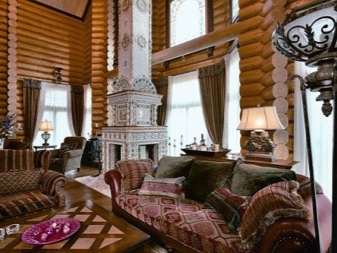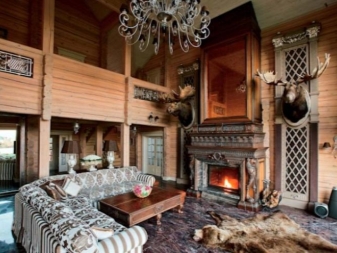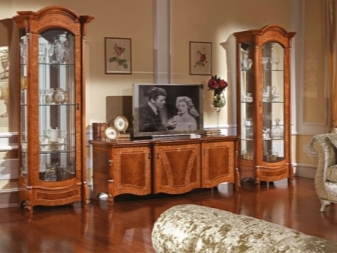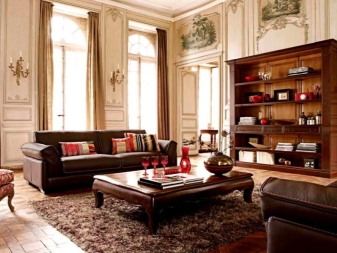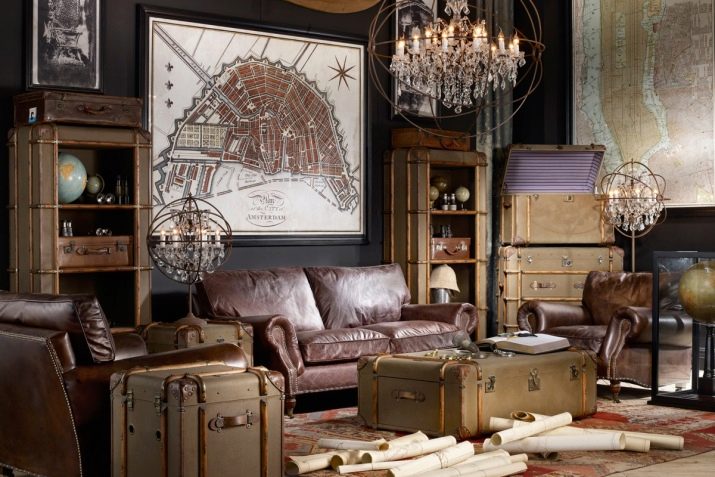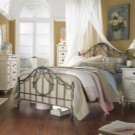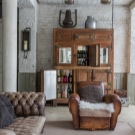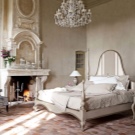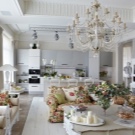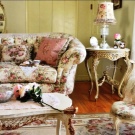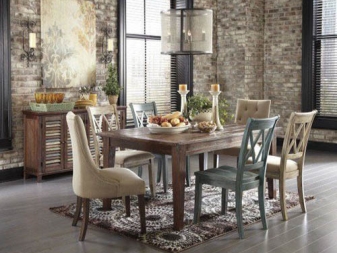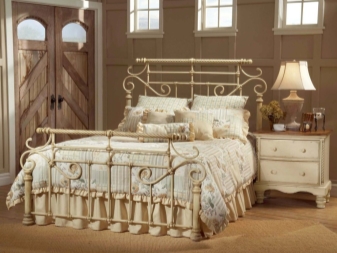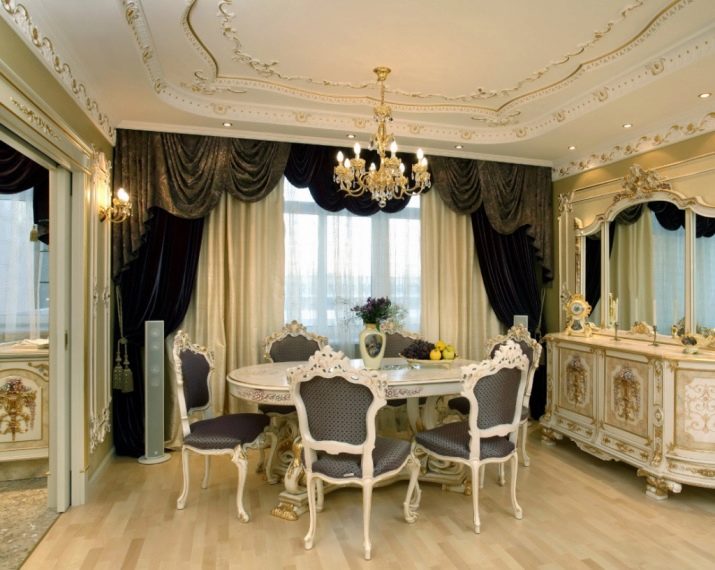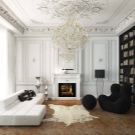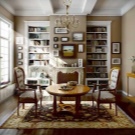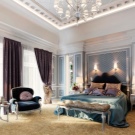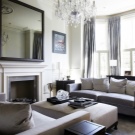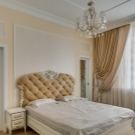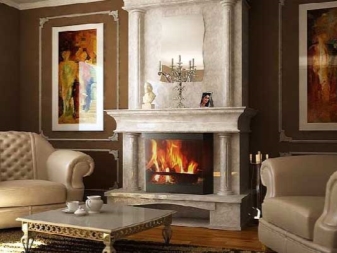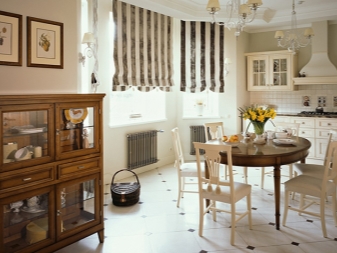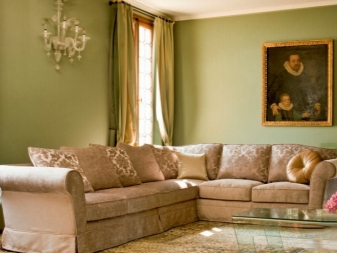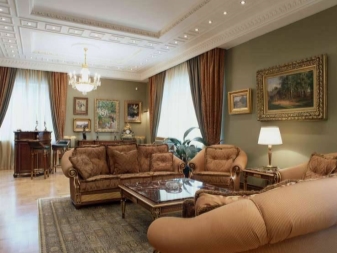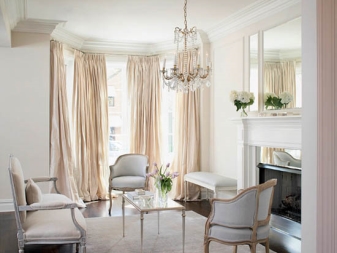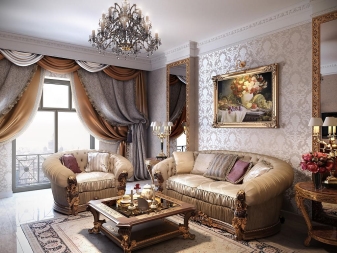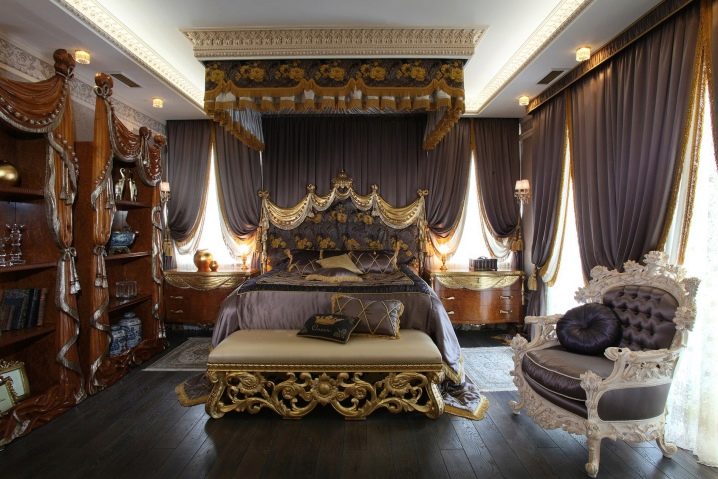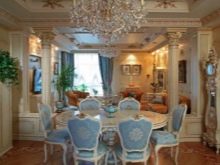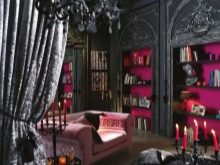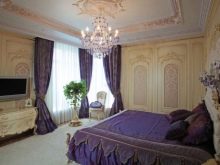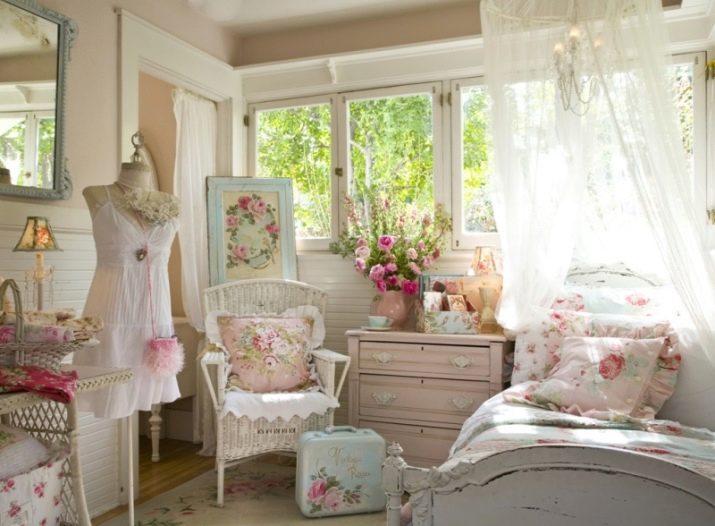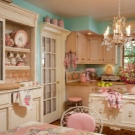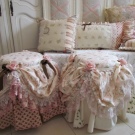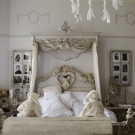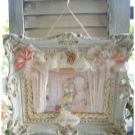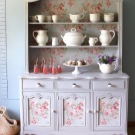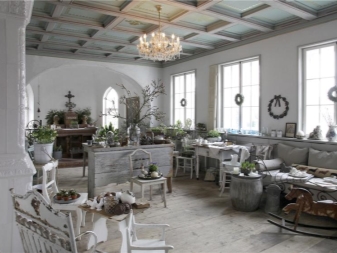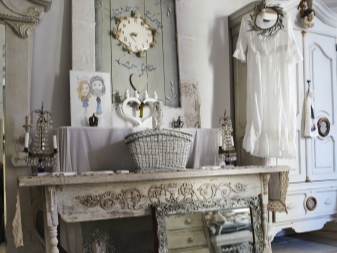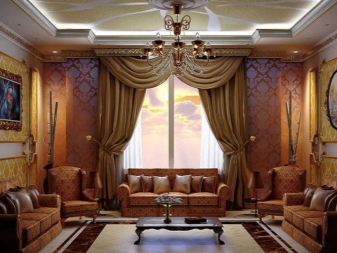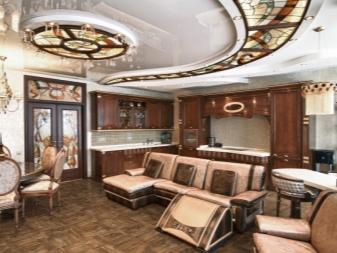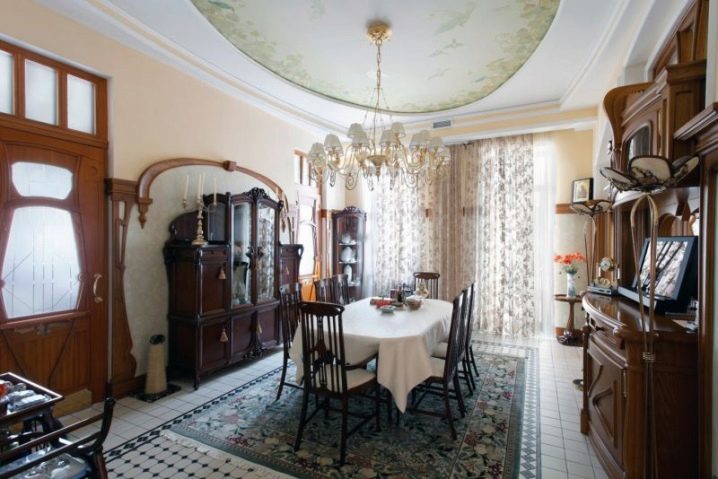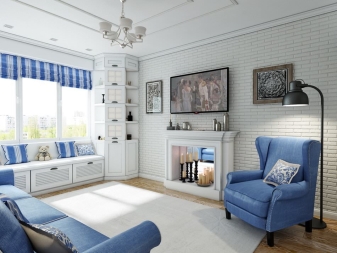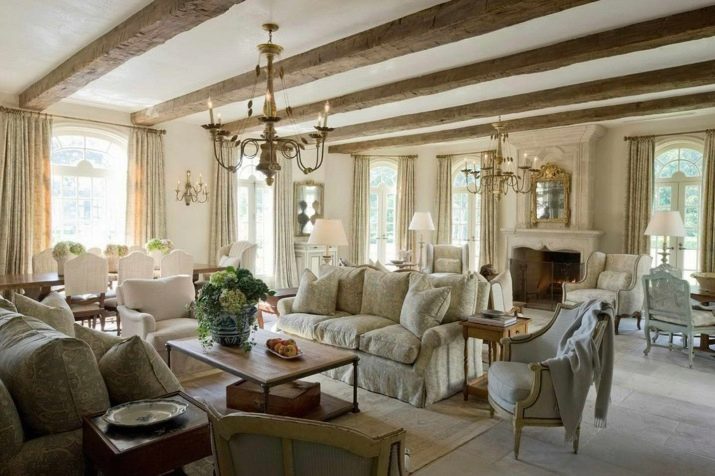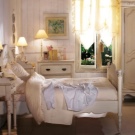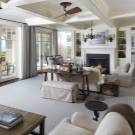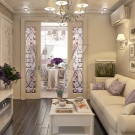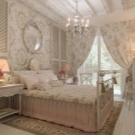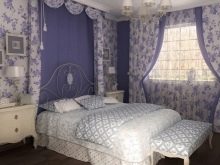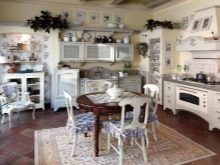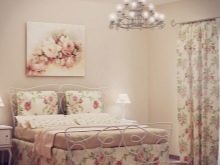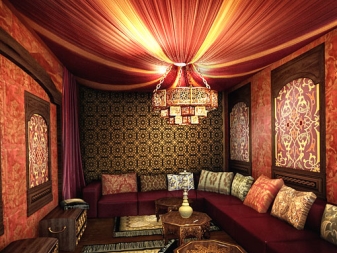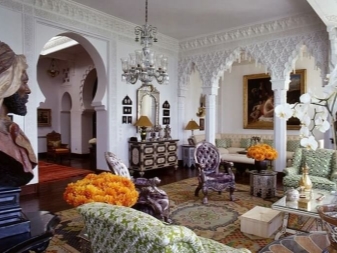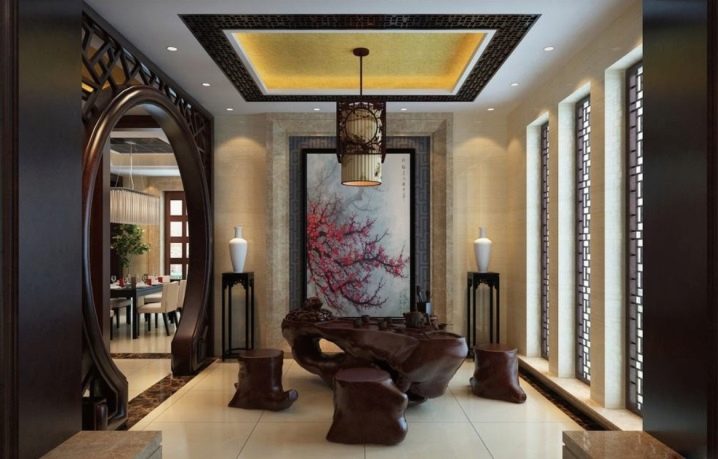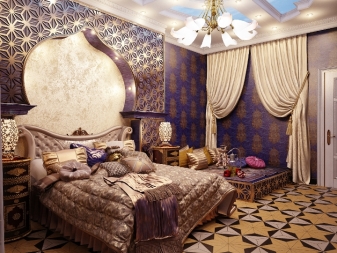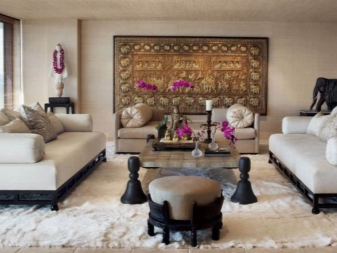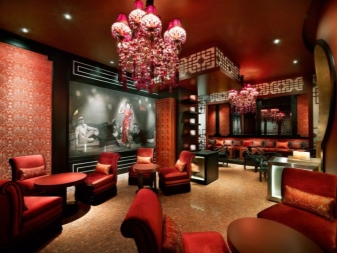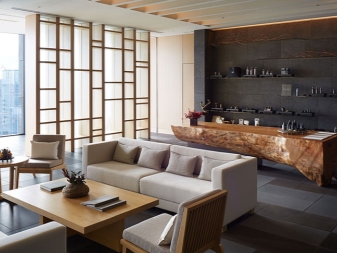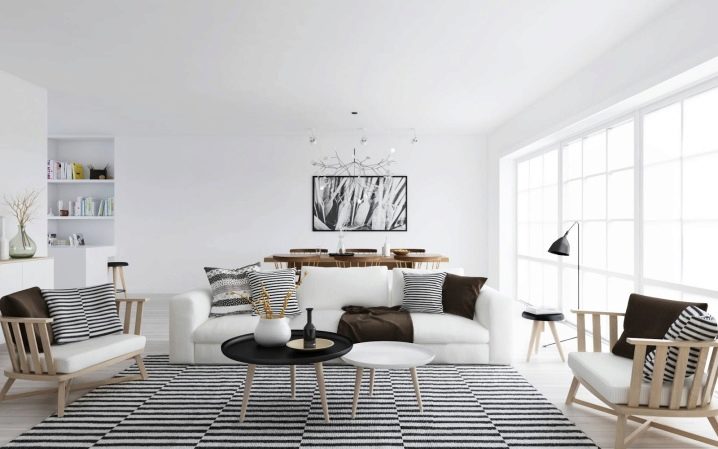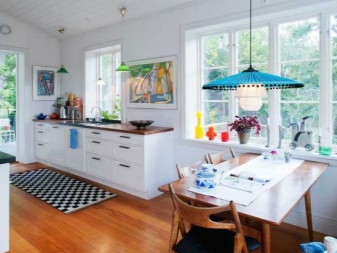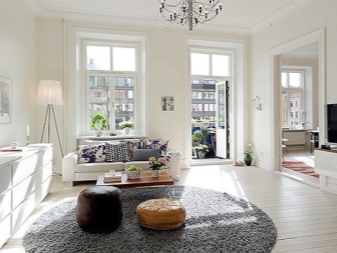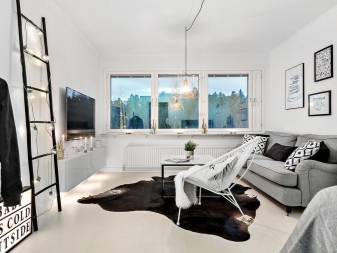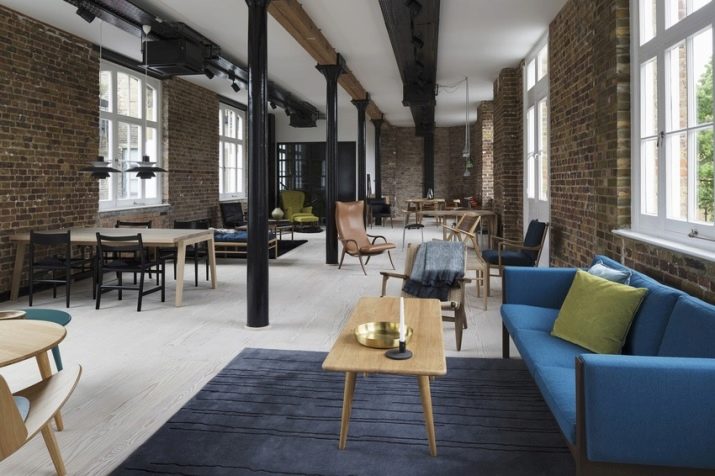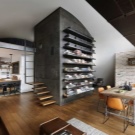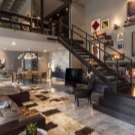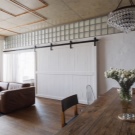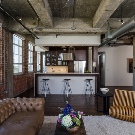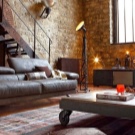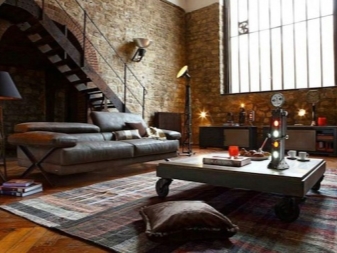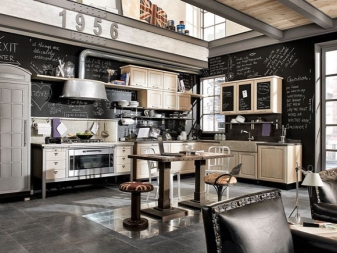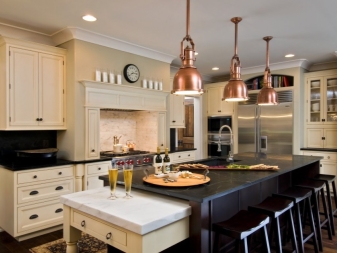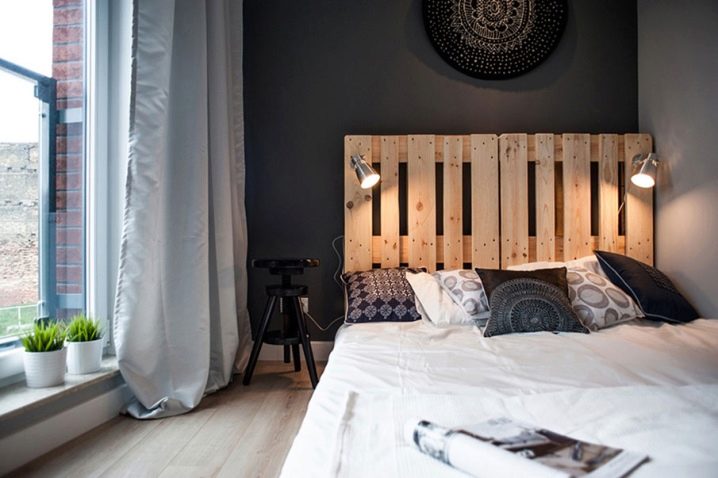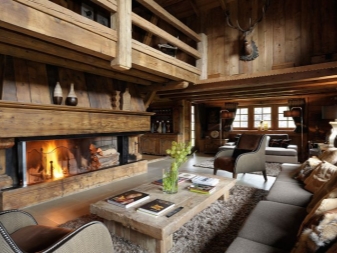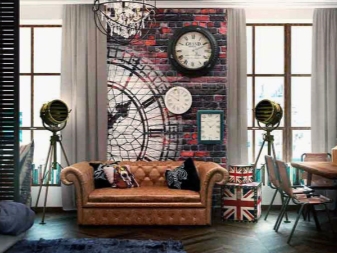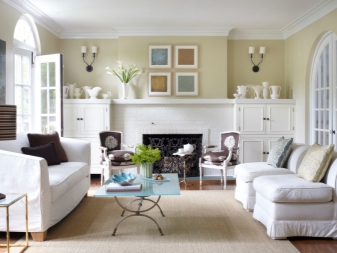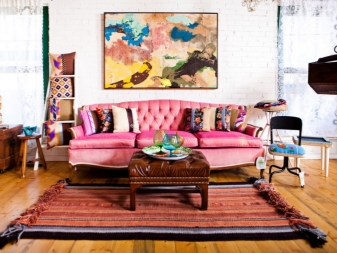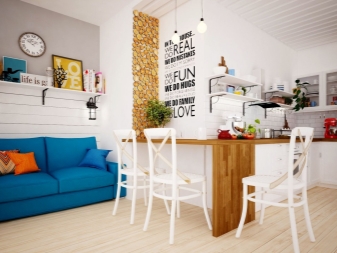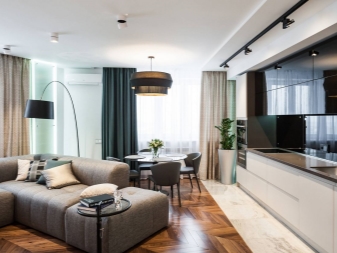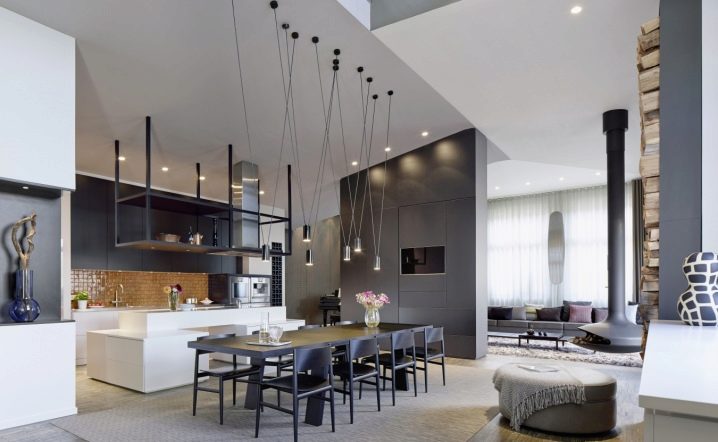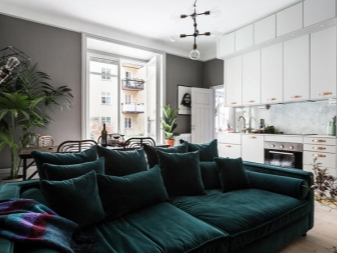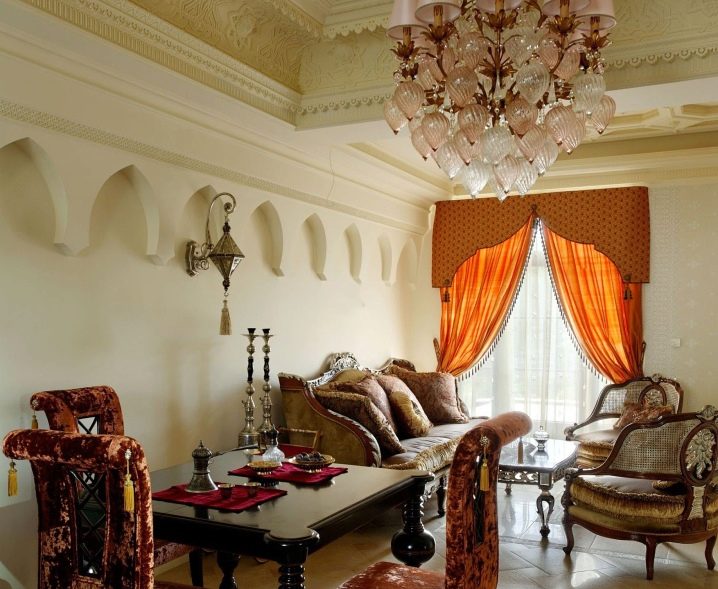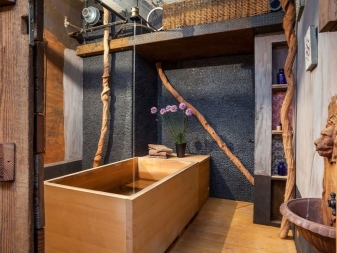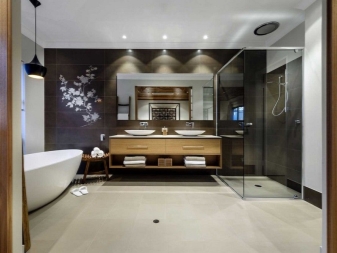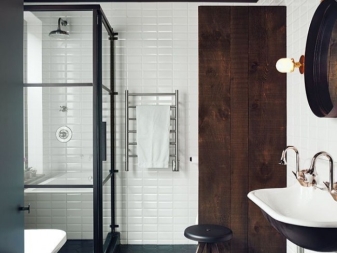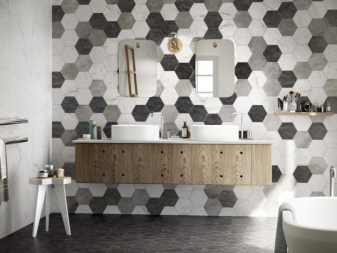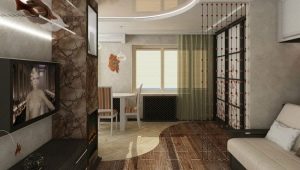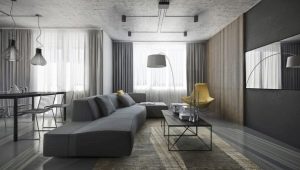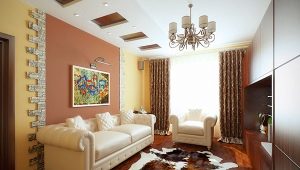Features of interior design in different styles
Interior design in different styles is creative. To create your own unique design, you need not only to understand the styles, you need to understand the features of your nature. Then you can achieve true harmony in the design of your home.
What are the?
There is a rich choice of interior styles: modern and classic, created for comfort or presentability, typical of creative people or adherents of everything trendy.
Styles are divided into modern, historical and ethnic.
Historical styles are Greek, Roman antiquity. They appeared and existed in their original form from the XI century BC. er until V century n. er During this period, the main principles of harmony and proportionality in the interior and exterior were derived.
Next, you can select the Romanesque and Gothic styles (X-XII and XII-XV centuries, respectively).The latter is a style in the art of the Middle Ages. It was developed as an interior style whose features are a high white living room ceiling, artistic forging on a chandelier, and a massive table made of hardwood.
Renaissance style - Renaissance. It was followed by the development of Baroque, Rococo, Classicism, Empire, eclecticism (from the end of the 16th to the end of the 19th century).
The style with pronounced historical and ethnic features - the colonial, which began the British colonialists.
In the XIX century, the so-called "village" styles of grunge and Provence (from the French "grange" - barn) emerged. Grunge distinguishes the absence of elements of excessive luxury, but also negligence. Provence - the style of the French hinterland, which arose on the southern coast of France.
The Stalin’s Empire style, the style of Stalin’s era, stands apart. It has the original elements of the imperial French architecture of late classicism, the main features of which were formed during the reign of Napoleon I.
Historical modernity appeared at the turn of the nineteenth and twentieth centuries., slightly ahead of Art Deco. The main idea - the denial of austerity. It helps to embody eclecticism, unusual shapes, halftones, combined with ethno ornaments and patterns, luxury, expensive materials.
Country of the beginning of the last century - the style of the village.Now he personifies functionality, rural beauty, simplicity, clear forms of furniture, carelessness and romance. No luxury, tranquil natural shades (unless you consider real wooden furniture to be a luxury) are the rules of country music in any country, each with its own village stylistic traditions.
Chalet - a style that reflects a rural house in Switzerland. Now it can be a country house with the attributes of hunting, simple wooden furniture, wrought-iron details and accessories, an obligatory fireplace and ceiling texture beams.
Country styles, chalets, grunge and Provence combine historical roots.
The marine interior was once formed by shipbuilders to improve the interior of the cabin of notable English persons, therefore its first features are English. In our time, its essence is peace. It is supported by the necessary attributes - furniture and natural wood floor, a combination of white and blue colors in all elements of the interior, antiques, details of the ship's subject.
Some modern multidirectional styles:
- Contemporary The fundamental feature is rationality and comfort at an affordable price, furniture that saves space;
- Retro. It is built around things that were at the peak of fashion in the mid-twentieth century or family values like a samovar. But more often it is designer furniture of unusual shapes, materials and colors, vivid fantasy paintings, the same carpets. All that the flea market offers is welcome and can be found at the buyers - furniture and things that need restoration;
- Fusion - the connection of different parts into one. It embodies the combination of design ideas, creates a space free of stereotypes - extraordinary solutions, a mix of objects of different styles. Rule one - do not violate personal harmony. “No” overloading with details, “yes” - to open space, lightness and positive;
- Ecostyle. These are safe materials in decoration, furniture and accessories - clay, glass, stone, wood, natural fabrics.
There is a European modern trend, which some designers distinguish in their own style. It was formed from several trends and is based on the main principle - the convenience of the owners. It varies from country to country - the interiors of Western Europe are different from those of Eastern Europe. Each country has its own concept of comfort - from rare wooden shutters to windows completely devoid of curtains, from high-tech kitchen furniture to country-style tables.There is one common feature: the absence of vertical partitions, open interfloor spaces, minimalist details, restraint in colors and decor.
Ethnic styles can be modern or historical. The first is the Mediterranean - a complex, sunny, overloaded with details, but creating a festive atmosphere with 4 national destinations - Greek, Moroccan, French, Italian. They differ in details and colors: cold, closer to the sea - from the Greek, warm - from the Italian, and bright - from the Moroccan direction. Provence and grunge belong to the second, that is, to ethnic historical styles.
To modern ethnic styles can be attributed to the American style with spacious rooms in soothing colors, eclectic furniture and the latest technology.
There are western and eastern directions, where both interiors with historical features and fully modern or presented in both versions are found.
In Japanese style, the basic principles are implemented according to historical traditions or are presented in a completely new reading.The emptiness and energy freely circulating in it, wooden decoration and bamboo, natural calm colors, the use of partitions and screens, austerity and the complete absence of things exposed to personality revealing the signs are in this direction.
Oriental includes Chinese and Moroccan styles, but they represent a different East, its different directions are Asian and Arabic. Indian - also from the eastern ethnic styles, but it is due to the rich history of culture, to the historical.
Chinese - the lack of square and triangular pieces of furniture, sharp corners, carpets (with the replacement of mats), curtains. Preference is given to natural light. Welcome to the development of a screen, national decor items, the use of color as symbols of power, health, wealth.
Moroccan style is characterized by patterned lamps made of brass and copper, exquisite carved furniture, white color of finish as a background for golden or silver decor, bright ornament and colors, curved arches. There are details that create elegant or excess luxury of the East.
Western group includes English, Italian, German, Swedish, French national styles:
- English - aristocratic, with a love of leather sofas and armchairs, dark furniture made of precious wood, with proportionality, good taste, restraint and balance of decors. A lot of accessories and valuable trifles on display as a subject of love and pride. The room is entirely made of furniture, the light is muffled;
- Italian - the decoration uses the natural tones of this sunny warm country, the furniture can be carved marble and wood, arches and a fireplace are obligatory;
- French - not frilly, with wrought-iron and carved details of antique-styled furniture that should look expensive, but not catchy, high ceilings and windows, heavy curtains, ennobled walls.
- Russian style stands, as always, between East and West. Wooden walls and furniture, objects of Russian life, typical dishes. Details and style of furniture and accessories depend on the chosen direction - non-Russian, naturalistic peasant, noble or fabulous. There can be both figured carved balusters of a handrail, and bright splint, and a crystal chandelier under the timbered vaults, and expensive original furniture in the style of Russian Rococo.
In the field of design, there are general trends in the choice of styles in the world, dictated by designer fashion, and there are private ones for an individual country. In Russia, many adherents of the classics. America is addicted to country and own style. In Western Europe, minimalist interiors with national colors are often found.
Most popular
Designers noticed people craving for self-expression and creativity and boycotted calm and impersonal interiors. Fashion proposes to turn to what was claimed 40-50 years ago, developing the ideas of those years in the furniture industry.
The polished surfaces promise to take the place of the brushed, and the styles in which such furniture is the main element, tend to change the now popular country, loft, hi-tech. In Russia, this may not be successful, since our residents have not all got rid of the old polished furniture. And those that have changed the interior are unlikely to have time to miss furniture with polishing, which was widespread in the USSR and has been used for decades.
Given the latest trends, one should expect a bias towards the choice of styles that are free from rigid frames and open to imagination and expression of oneself through the interior. These include vintage.
Vintage
Wine-making term “vintage” - “wine aging”, defined the name of the interior style. Everything about him seems to be “sustained.” The interiors provide an opportunity to travel back to an era that delights, and thanks to the objects taken as the basis of design, feel its spirit, fully immersed in that period. The time frame for the choice of styles and the corresponding rare or artificially aged, stylized things are limited to the end of the nineteenth century.
This interior style is for dreamers and travelers., true friends and aesthetes, romantics and inventors - for all who feel the taste of life. The nature of the vintage is eclectic - no need to try to achieve absolute similarity with the selected period of time, it is enough to pick up stylized things with taste - a retro phone with a modern "stuffing", lighting devices (wall lamps, chandeliers).
The style features are:
- Decorative orientation;
- Cold pastel shades, based on beige and whites, complex blue, contrast brown, blue and dark gray are acceptable;
- Delicate floral wallpaper can coexist with rough plaster;
- Non-natural materials are prohibited;
- Fabrics of natural origin can be expensive (silk, brocade) and more affordable (linen, cotton). Drawings of fabrics for decoration are different, plant, cell, their combination is possible;
- Real antiques, like a vintage set or photographs, will be the main focus of the composition;
- Furniture made of artificially aged or painted in light tones of wood, which is trimmed and the surface of the room;
- Bed with wrought iron sides is suitable for creating a romantic interior.
Despite the eclectic style, one should adhere to moderation in the choice of things - they should be of the same period: the 20-30 of the twentieth century or the 80-90 of the XIX century. Otherwise, the interior will look like a museum with exhibits from different times.
Classic
Nobility and harmony of antiquity, calm and completeness, the pursuit of the ideal - the main thing that distinguishes the classics.
Due to the restrained elegance and high quality of furniture and decoration items, the classic style keeps on the leading positions in the rating of interiors of our country. Natural valuable red and dark wood is affordable for a small number of Russian citizens, but classical furniture with MDF fronts styled for it is available.
Mandatory attributes are marble fireplace, bureau, chest of drawers, luxurious dining group, large mirrors, paintings in beautiful frames with portrait painting in the style of the XVIII century, floor vases decorated with drapery and sculptural painted walls, stucco on the ceiling, large windows and doors from a solid array wood, typesetting parquet made of precious wood or the floor of stone.
Upholstered furniture needs upholstery made of expensive floral fabric. Bright colors are excluded, but pastel colors with cream, pale green and beige shades are applicable. The correct geometry of space, symmetry of the placed objects is necessary;
On large squares, columns are appropriate, dividing a room into zones that smoothly flow into one another - the hall passes into the living room, and the living room into the dining room. Large forms and relief of furniture and accessories imply the presence of high ceilings and a space of appropriate size, which should be free from the furnishings. There is no overloaded interior with furniture and its elements. Classic interior is proportional and balanced.
By examples in both cases, the basic principles of organizing space are observed, but in the second case, furniture of a different style does not violate the general concept at all and looks extremely organic. This option is even preferable, as it balances the luxurious decoration of the room.
Baroque
The phrase perola barroca in translation from Portuguese means "a pearl of irregular shape." Baroque is an artistic style of the Renaissance, demanded from the end of the XVI to the middle of the XVIII century, its founder is the famous sculptor Michelangelo.
The main features are the excessiveness of the décor elements, the deliberately created illusion of luxury in some details and true luxury with grandeur, idleness and scope.
Style details:
- The clutter of space with furniture of plastic geometry is frivolous, not strict in form;
- The glare of the golden trim of the ceiling and walls, an overabundance of complex ornaments and patterns, carved details, precious metals shining with glitter - with gilding, bronze, silver;
- Pedestals for sculptures, pastoral frescoes, twisted balusters, calm parquet or natural stone floor are the last to “finish off” the inexperienced spectator of all these excesses.
This palace style cannot be recreated with imitating materials, the false will look cheap, toy, but modern classical interiors do not need this.
For information on how to choose the interior for the Baroque style, see the next video.
Chebbi chic
If you do not know that there is such an amazing style, but just for the first time to see photos of the premises decorated according to its canons, you might think that this is a photo of doll houses. And not our time, but about 50 years ago. So everything in him is touching and in a good way unnatural.
This is an interior with a story, things for it are bought at the flea market, restored or inherited, decorated with love. It originated in the last quarter of the last century and feels a kindred Provence soul in it.
Delicate watercolor palette creates magic, along with antique furniture, painted in bright colors. Its wear can be natural and artificial.
The peculiarity of chebbi-chic is that the furniture does not have strict forms., and the details are designed to enhance the effect. These are any cute little things - vases, caskets, albums, handmade rugs.Lace, chinaware, tablecloths, soft seats and backrests for chairs, specially stitched for convenience, flowers in the design will provide a home with comfort, and the interior - with a romantic perception of people living in the house and visiting guests.
Modern
The style is based on asymmetry, freedom of movement due to the small amount of furniture and its decorativeness. Curved shapes, curved lines and rare right angles are a characteristic of its decor.
Walls of muted shades are just a background for fantasy luxury, as well as a natural floor of a modest design made of stone, wood, one with walls of tone or slightly darker. Finishing of the lower part of the walls with wood panels is permissible.
Original furniture from expensive wood of the streamline form includes shod and carved details. The fabrics in the decoration are natural, high-quality, their modest pattern is also background. Reserved and complex natural colors are sometimes diluted with bright colors to give depth.
A lot of fabric decorates the interior, help her details - drapery, embroidery, fringe. Girls with long hair in the decor - a recognizable sign of style. All furnishings of unusual shape constitute the essence of the interior and are its decoration.
Provence
Rustic interior style originated in the south of France, in Provence, close to the sea coast.
Distinctive features:
- The presence of white painted aged plain wooden furniture or furniture with classic details with characteristic carving, forging, patina;
- Rough plastered walls, suitable combination with brickwork, which was exposed in places "itself." Wallpapers are almost never encountered, but if the owners cannot live without wallpapers, then paintings with a light floral pattern are permissible;
- The construction of the houses of the time when Provence was born, suggested ceiling beams. Since then, they have remained one of the main accents of the style;
- Natural wood floors of light shades or tiles with rounded corners as a floor covering;
- Fabrics and curtains in flower or plain, white or natural pale shades. Preferred flax, wool, chintz, cotton;
- The symbol of Provence as a geographical location and style is lavender, fresh and dried, one with other plants, spread and spread throughout the house in abundance.
- Finishing colors are very diluted, as if burned out in the sun;
- Ruffles, embroidery, covers, porcelain, ceramics, wicker baskets as a decor or instead of chest of drawers, lamps, chandeliers, make the interior "home";
- Windows, doors painted white or light pastel colors. If you paint beams in white and the whole low ceiling, this will help to visually lift it and remove the feeling of a squat room with low walls;
- Favorite trinkets accessories do not clutter up space, just like furniture. All sorts of vases, boxes, jars for bulk products, frames, jugs, shells - all arranged tastefully in moderate quantities on shelves, cupboards, small countertops, surfaces of kitchen and dining tables.
Oriental
The Eastern group includes ethnic styles of several Asian, Arab, African countries and India. Everyone has personal traits, but there are also common features in two subgroups - Asian and Arab.
The main features of the Arabic direction are an abundance of textiles, carvings, patterns, interior brightness, arches and vaulted ceilings. His task is to create a suitable atmosphere for rest and rest.
The Asian direction is distinguished by the features of minimalism, following the philosophy of their country both in interior design and in the choice of planning.The styles of this subgroup are characterized by calmness in colors (there are also bright contrasting ones), furniture details.
Asians are prone to the correct geometry of space and straight lines, and representatives of the second group prefer curved, smooth lines of space and furniture. Comfort for the Arab subgroup is traditional.
The decoration of oriental interiors can be either in restrained or light colors, or in bright, contrasting ones. Each culture has centuries-old traditions, a rich culture that shaped the attitude to the world and objects of beauty. Muslims do not accept images of people and animals, compensating for this with luxurious ornaments that have been created for thousands of years. Buddhists value unity with nature, closeness to it, and this is expressed in the fact that they use natural materials in the construction of their dwellings and decoration - a scattering of stones for them can be a real revelation and the best decoration, like flowers in gardens for Europeans.
The floral patterns of the Chinese and Japanese are made with love that Arabs are not able to experience, feeling and understanding beauty in a completely different way. For them, complex wood carving or metal, bright complex mosaic will be the subject of admiration.
Scandinavian
Style of open space, light and open windows.The furnishings and furniture are often white or the walls are of bleached warm hues. The exception is colored and wooden pieces of furniture as inclusions in a bright space. Functional comfort and the absence of unnecessary details leave a feeling of lightness and cleanliness.
This is not an decorating style, but an interior of elegant comfort and free space.
List of its features:
- The windows are in themselves decoration and do not need curtains and curtains, they solve the problem of maximum natural lighting;
- The floor can be natural wood or its imitation;
- Simple comfortable furniture arranged in any convenient manner. These are shelving and modular systems, cabinets, open shelves with the necessary or expensive things. Tables and chairs - white or natural wood. It depends on the finish and color of the rest of the furniture. The main thing is to observe the principle of lightness of the situation;
- If the necessary is at arm's length, the Scandinavian interior is properly decorated;
- White walls are the perfect backdrop for dark contrasting or bright accessories, furniture items;
- Finishing happens in gentle warm and light pastel tones;
- Bright accents need to be set carefully.An interesting blanket, drawing on a sofa cushion, a large photo on the wall is enough for the internal balance of color.
Scandinavians value real wood, - parquet, furniture, therefore style presupposes its use. If it is impossible to lay parquet, its imitation will do, but the other rules must be followed.
Industrial
Style for romance-loving large industrial areas. Not to be confused with a loft, the appearance of which was historically conditioned and dictated by necessity, when the real industrial premises that turned out to be unnecessary were repaired and sold by owners as cheap housing to people of creative professions who saw the potential in these "palaces" of pipes, glass and concrete.
The industrial style emerged later as a proposal for the demand for interiors of such orientation, created in ordinary houses with a large area. With loft they are united by almost everything except the origin and place of sale.
For finishing, designers recommend buying special materials with the effect of aging, - such is a coating that simulates rusty iron or bare plaster. Huge windows do not imply curtains.
The colors are suggested to be used in accordance with the industrial design: all metallic shades, the color of the stone, perhaps, interspersed with bright unnatural colors that are characteristic of plastic furniture.
Kitchens are equipped with the latest technology, their surfaces are made of metal, natural or artificial stone. Countertops bar racks, dining tables can be made of wood and solid array. Wallpapers in such an interior would look inappropriate, unlike posters, huge photos in simple frames.
Usually industrial style is ordered by people, the area of which houses allows to embody all the important features of industrial design. This footage from 100 square meters. m, on a smaller area to make it simply impossible. The size of the windows should also be consistent. The bigger they are, the better. French floor-to-ceiling panoramic apertures fit here perfectly.
The main idea of the style is democracy, in love with the urban lifestyle., suggesting modern ideas of beauty and convenience. In industrial design, you can find a bed made of wooden pallets, other primitive pieces of furniture and life, not without comfort, but aesthetically shocking.
The room, decorated in industrial style, can be very comfortable, but it will be cozy for a narrow category of people with specific views.
How to choose?
Wardrobe reflects personality. As psychologists say, it is worth “wake up and realize yourself,” remembering that we love out of clothes, and that we endure. If fashion is our everything, and not a heavy burden, you can safely choose fashionable styles. If you wear comfortable clothes instead of fashionable things, then the style is appropriate. A chalet, grunge, American style, boho with its comfortable blankets will do.
To make repairs to 24 square meters. m in a typical studio apartment, updating only the kitchen-living room and tiles in the bathroom, you should pay attention to the Scandinavian style or contemporary. Both skillfully use the space. Tile in a small bathroom is better to choose white, with the possibility of laying diagonally for the visual effect of increasing the area. Interiors with an old-fashioned mini-footage are not suitable because of the excessive decorative elements and massive classic furniture, the dimensions and décor of which will "eat" the already modest meters.
Next, decide whether you need wallpaper or plaster on the walls.The choice of photo wallpapers is great now, it is possible to print any images or stop on beautiful texture wallpapers. It all depends on the choice of style and design project that you can do yourself.
Continuing the theme of style selection, it should be noted that hobbies can play a key role in it: Imagine how you could arrange a booth for valuable things, demonstrating your achievements and hobbies, so that it would please and inspire. This will be the central theme.
Remember where you felt most calmly, in what place, at home, among what things, furniture, fabrics, smells. What the memory tells will determine the essence of the style. The details will come together as puzzles, and the choice will become obvious. You will understand in which direction to move.
If time allows, you can prepare more thoroughly, collect examples of interiors and their details in magazines. Dream about what you like, detailing and sketching what he saw.
Just do not focus on the cost - you can always find good analogues at an affordable price. It happens that a more democratic final version like more than the original expensive.
Beautiful examples in the interior
Here you can see examples of beautiful and stylish interiors.
Discreet oriental interior with tiles on the floor.
2 different Japanese-style bathroom designs.
Industrial black and white bathroom with spectacular hexagon tiles.
The original black and white interior of the living room.
